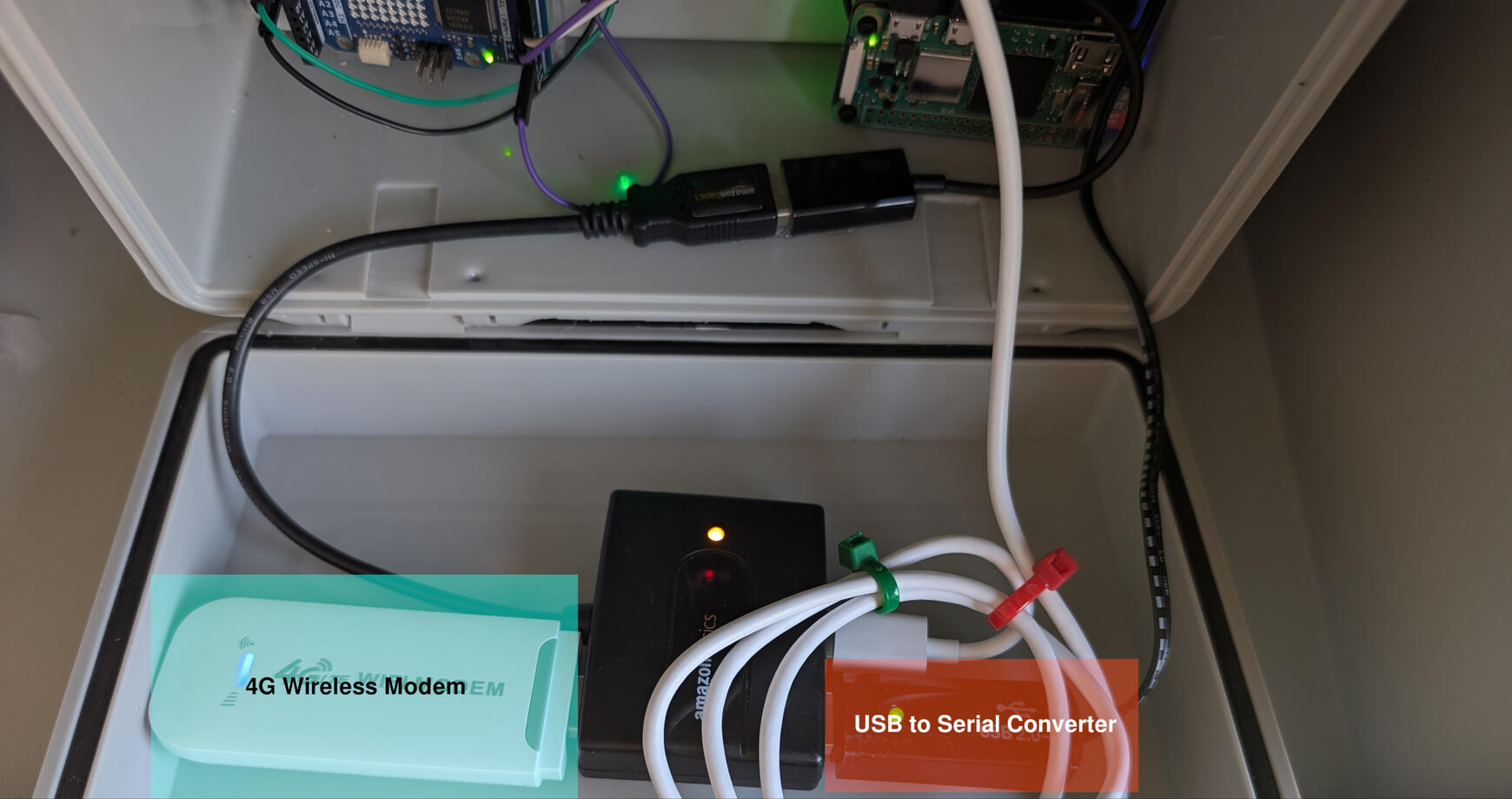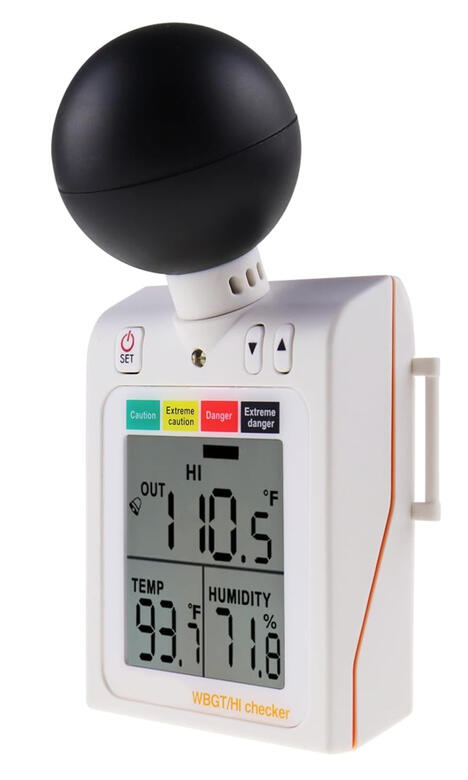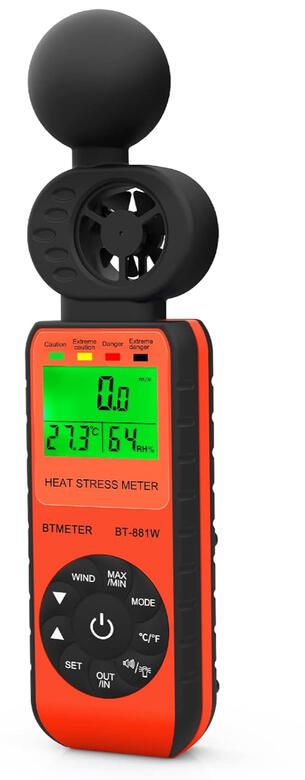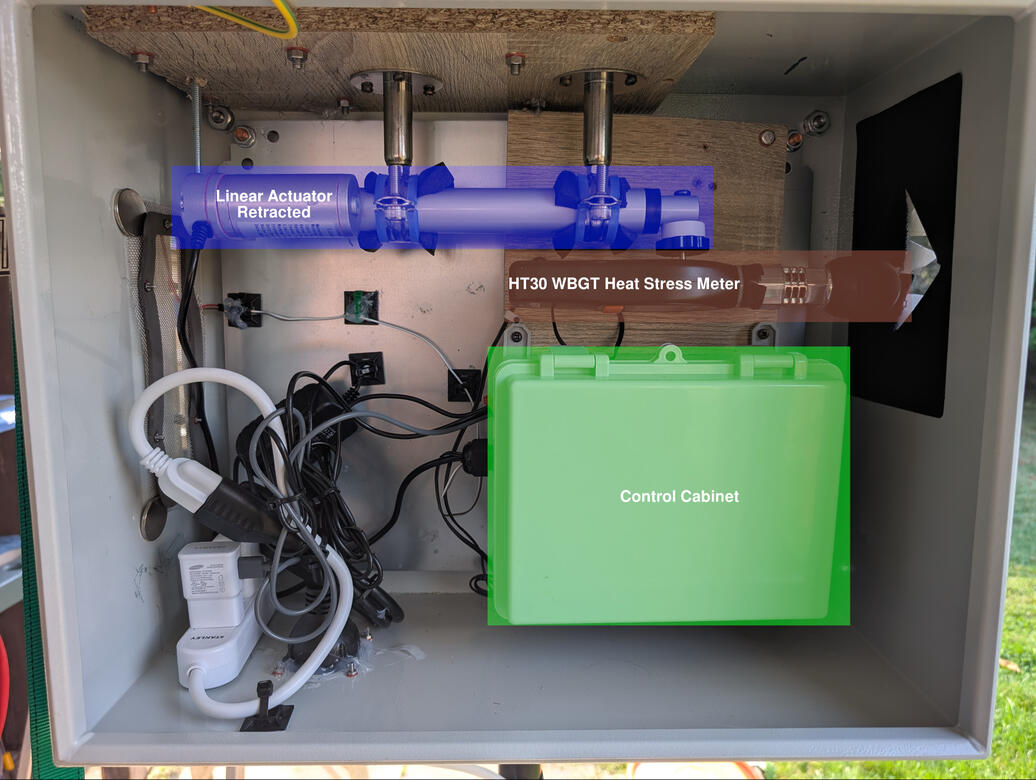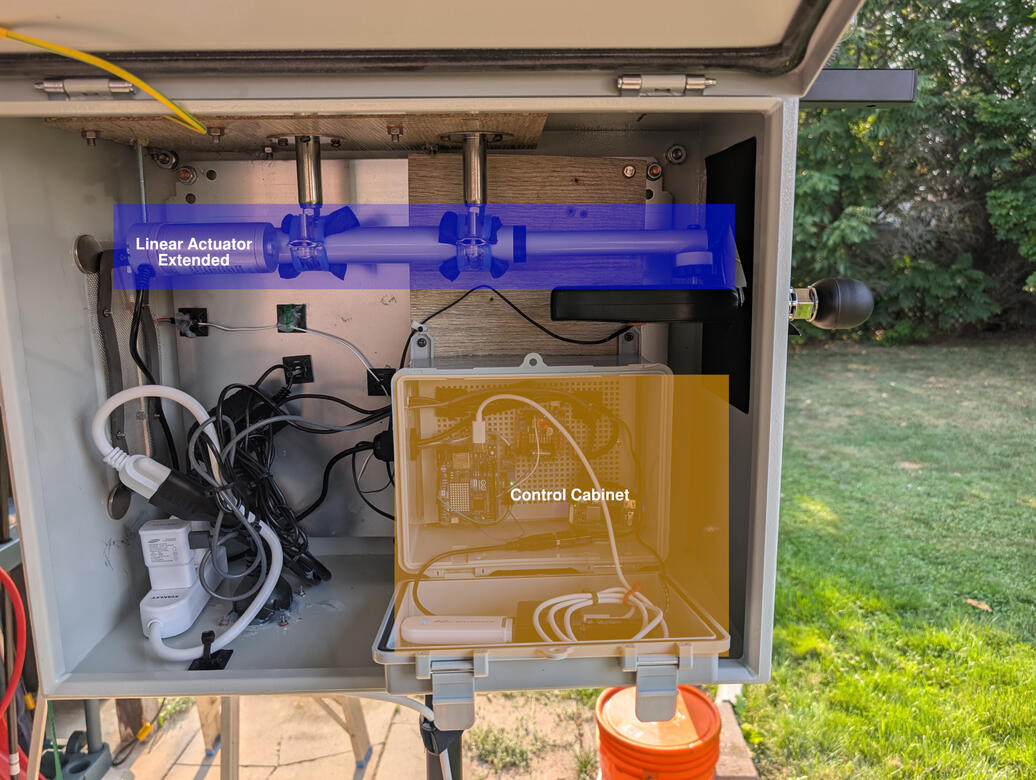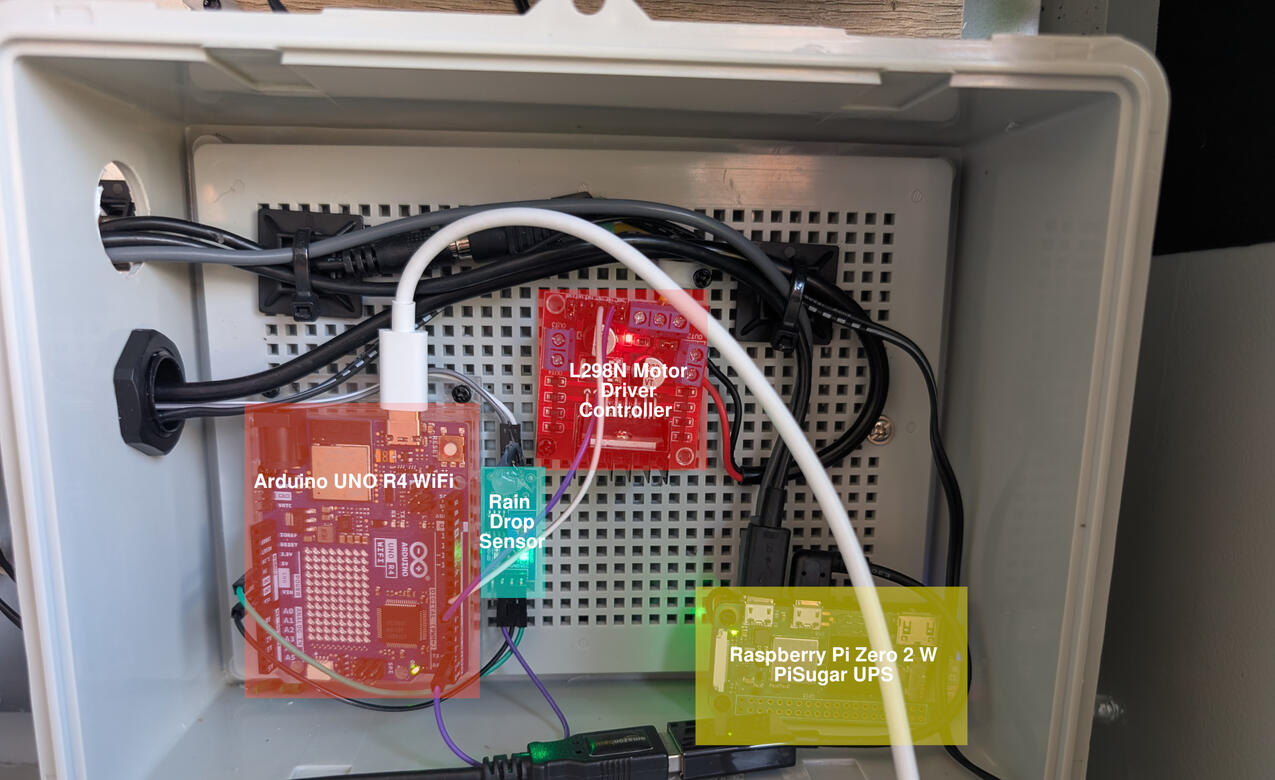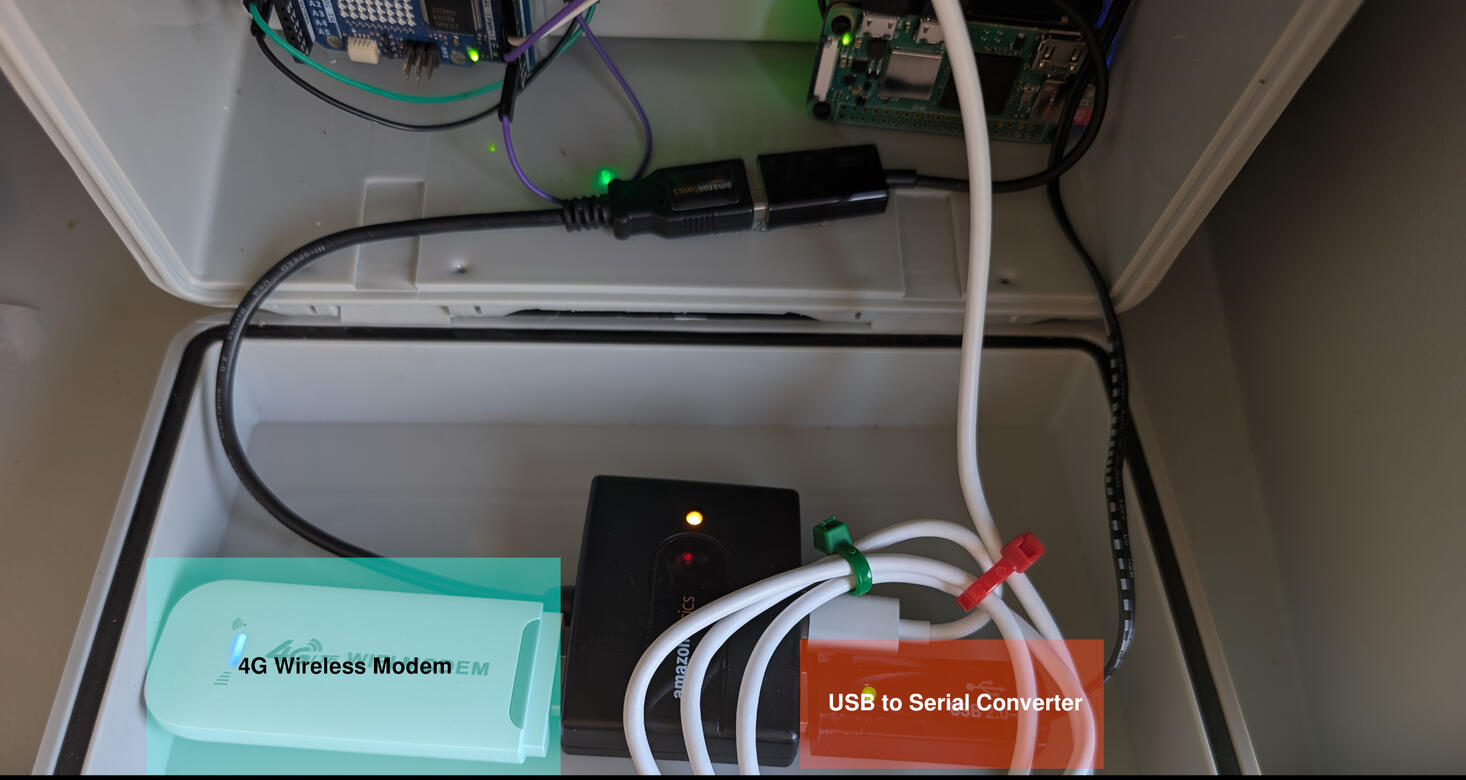
WBGT Project
Spatiotemporal Characterization and Risk Visualization of Wet Bulb Globe Temperature (WBGT) Exposure for Environmental Monitoring and Heat Safety AssessmentDr. Michael Robinson PhD CAT(C) ATC
About
The primary objectives of the WBGT project are:
- To design a low-cost, real-time WBGT monitoring solution using sensor hardware and open-source software tools.
- To store and structure the collected data using a relational database schema for efficient retrieval and analysis
-To visualize WBGT zones over time, identify durations of risk exposure, and summarize patterns in heat stress based on hourly, daily, and seasonal trends.
Technical Specifications
This image showcases the interior of the WBGT environmental monitoring station with the linear actuator in its fully retracted position.Mounted centrally, the actuator operates the protective housing for the HT30 WBGT Heat Stress Meter, which measures Wet Bulb Globe Temperature to assess heat stress risk in outdoor environments.The control cabinet below houses the core electronics, neatly wired to ensure reliability in all weather conditions.The assembly is designed for automated deployment and retraction based on time schedules and rain detection, ensuring optimal sensor exposure while protecting sensitive components from environmental damage.
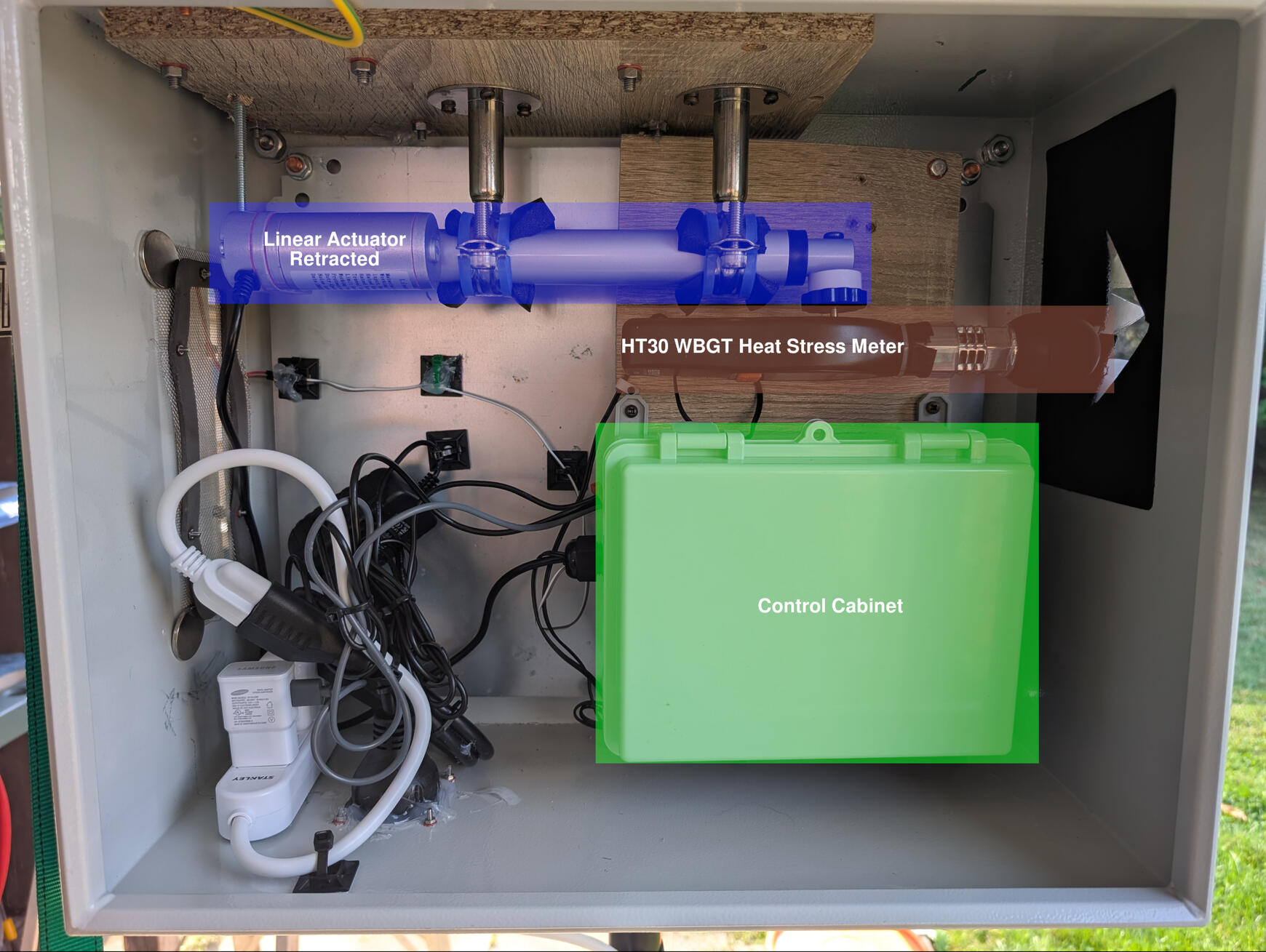
In this operational state, the linear actuator is fully extended, deploying the HT30 WBGT Heat Stress Meter into the outdoor environment for accurate readings.The control cabinet below is open, revealing the interconnected system of sensors, control boards, and communication modules working in unison.This deployment mode occurs automatically during designated measurement windows—factoring in both time-of-day and real-time weather conditions—to maximize measurement accuracy while minimizing wear and environmental exposure.
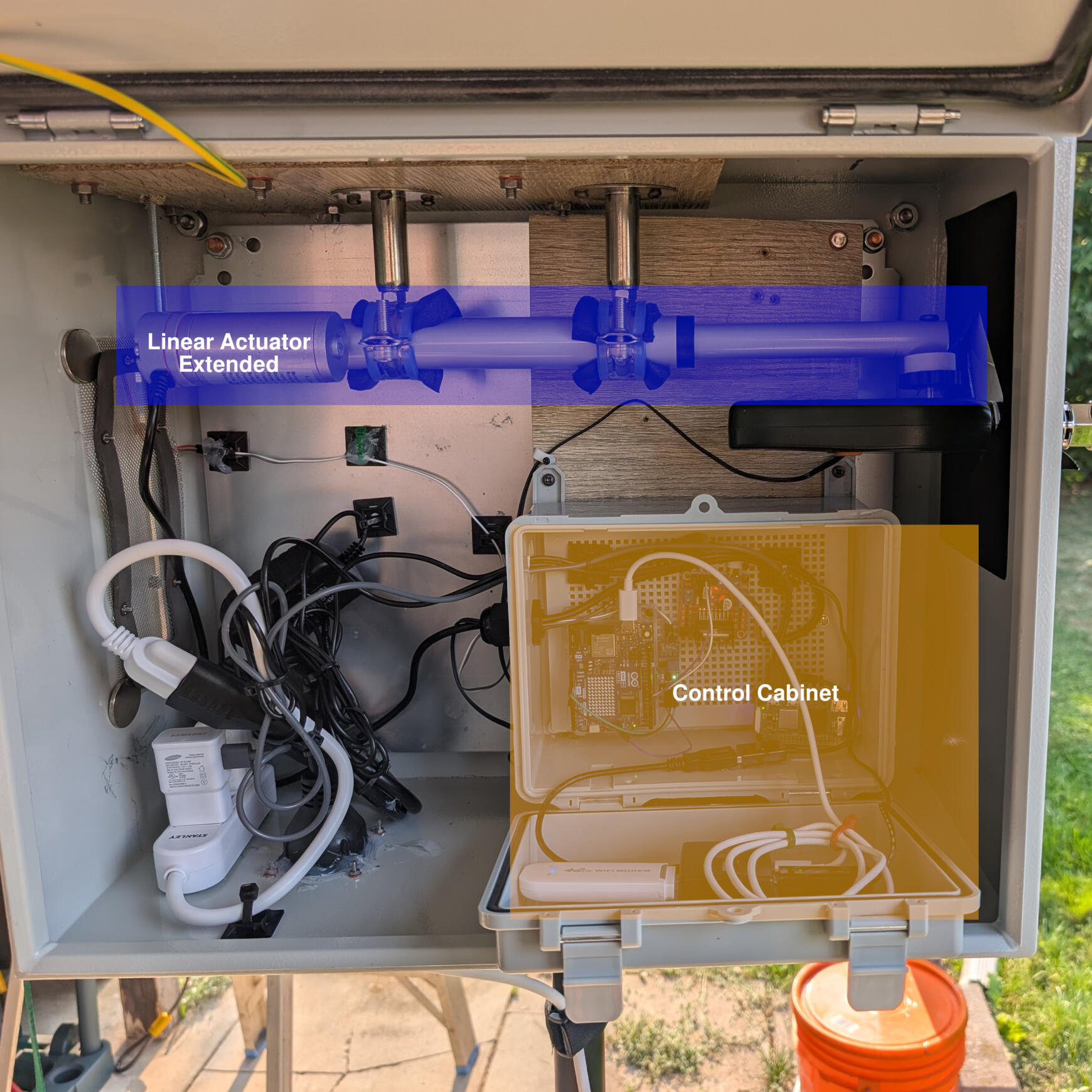
Control Cabinet Electronics
Inside the weather-sealed control cabinet, the main system electronics are securely mounted to a perforated backboard.Arduino UNO R4 WiFi responsible for motor control, rain sensor input, and timed operations.Rain Drop Sensor detects precipitation to trigger automatic retraction of the WBGT sensor.L298N Motor Driver Controller powers and controls the linear actuator.Raspberry Pi Zero 2 W with PiSugar UPS manages data logging, environmental monitoring, and wireless communications.
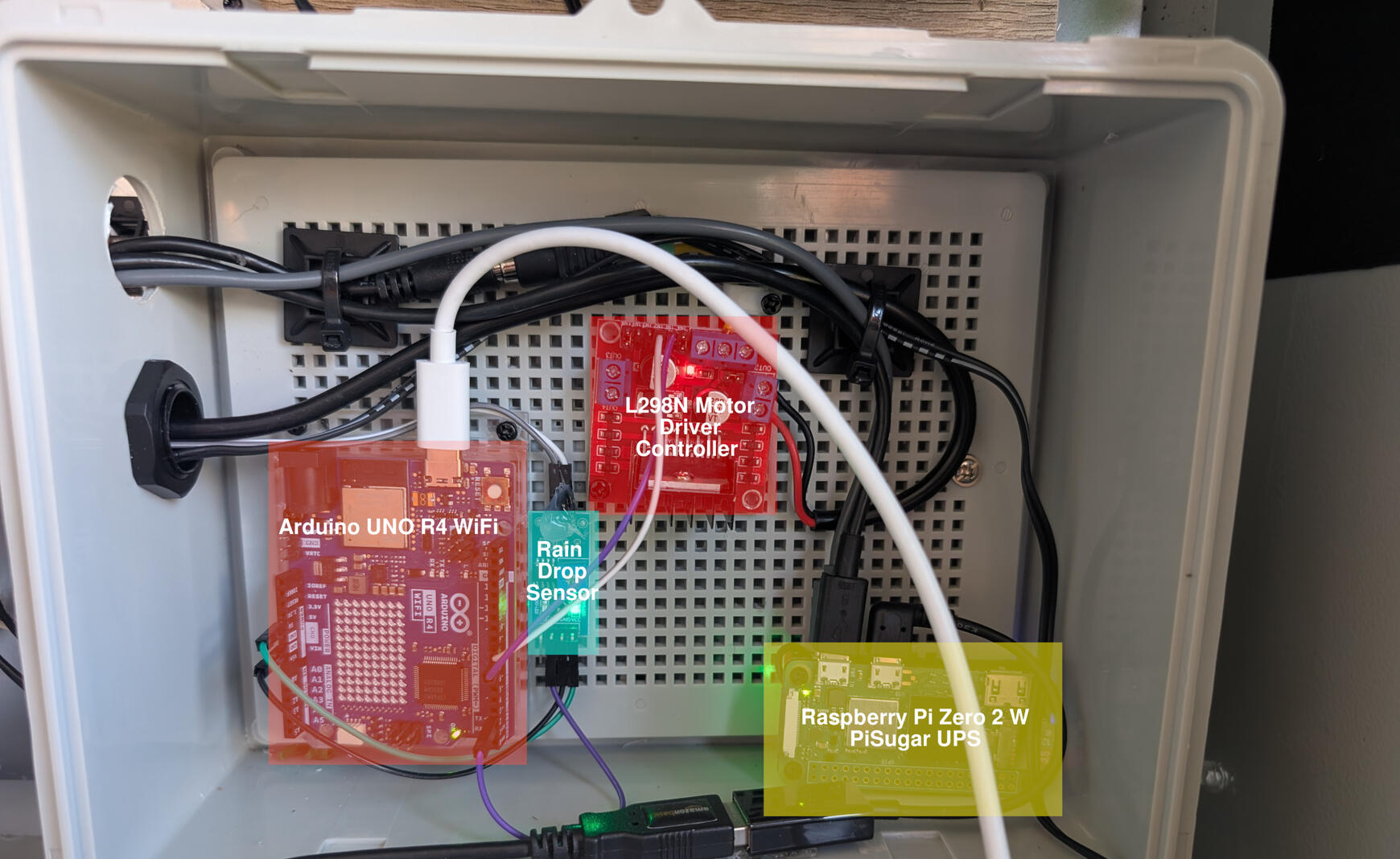
This view highlights the communication and interface hardware at the base of the control cabinet:4G Wireless Modem provides remote connectivity for real-time WBGT data uploads and remote system monitoring.USB to Serial Converter enables communication between the Raspberry Pi and the HT30 WBGT Heat Stress Meter.
The design ensures uninterrupted data transfer even in remote field locations without local network infrastructure.
